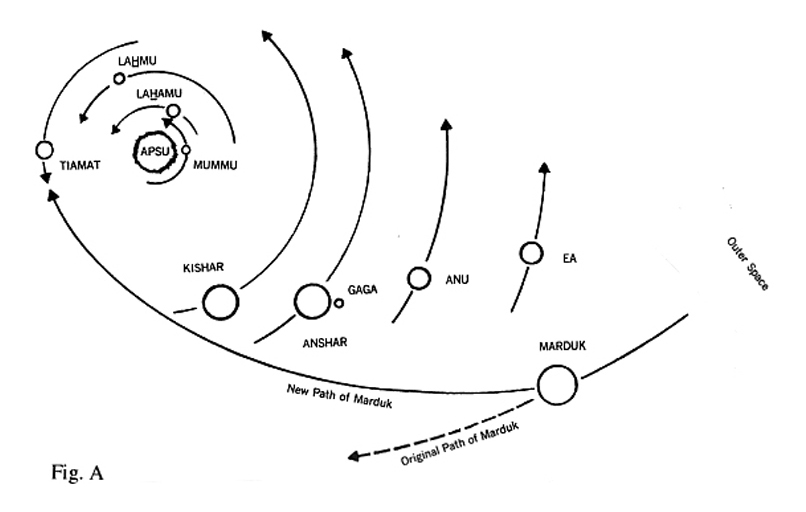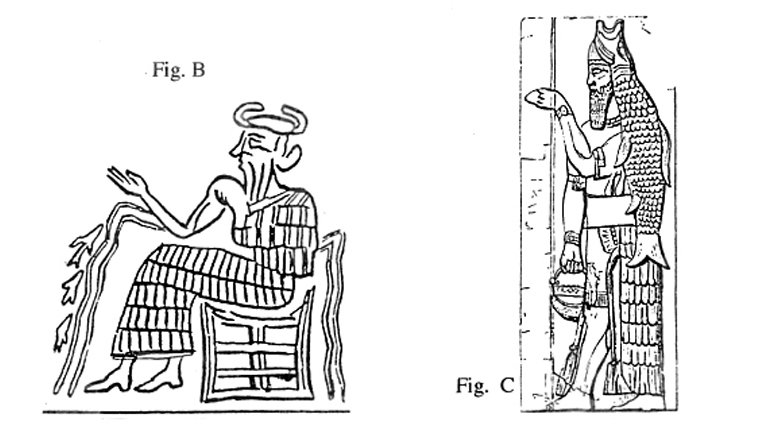So, You See, As Nibiru Orbits...
From Our Readers
The Case of The 'Yo-Yo Planet'
NICE NEWS FROM THE 'NICE GROUP'
Global Warming: WILL TECHNOLOGIES OF THE GODS COME TO THE RESCUE?
Science News: NEW DISCOVERIES CORROBORATE SITCHIN
"ENKI", "NIBIRU" DOMINATE "2012" SYMPOSIUM
EXCITING DISCOVERY IN THE SOUTHERN FISH
THE ENIGMA OF THE ‘PHAESTOS DISC’
IS THE PAST OUR FUTURE?
AS I WAS SAYING…
SO WHAT IS IT?
EXISTENCE OF SECRET CHAMBER IN GREAT PYRAMID REVEALED BY NEW STARTLING BOOK
ROBBING PLUTO OF ITS PLANETHOOD: Leave It The Way The Sumerians Had It Says Author Zecharia Sitchin
In The Media
In The Media: FATE Magazine, May 2006
When Calamity Strikes Mankind: THE "TSUNAMI" OF 10,900 B.C.
Q & A
EXCITING DISCOVERY IN THE SOUTHERN FISH
Two astronomical discoveries concerning extrasolar planets made news on November 14, 2008. While both reaffirm what Zecharia Sitchin had suggested, more than 30 years ago, in The 12th Planet, one of the discoveries has amazing aspects that corroborate - and even explain - details of ancient 'myths'.
'Extrasolar planets' is the term used to call planets not in our Solar System, orbiting stars other than our Sun. Since the beginning of this century, more than 300 extrasolar planets have been found; but they have never been actually seen: Their existence has been surmised from gravitational tugs or other effects on their parent stars. The exciting news now is that two teams of NASA astronomers have managed to actually see and photograph such extrsolar planets, thereby confirming the existence of other solar systems in the universe.
The pictures by the first team show not one but three planets - a veritable planetary system - orbiting the star HR8799 in the distant constellation Pegasus; the second team's pictures show a planet, estimated to be roughly three times Jupiter's mass, orbiting the bright star Fomalhaut.
Sitchin's Audacious Assertion
That planets might orbit stars other than our Sun has been theoretically held possible, though doubtful, for some time; but it was only in 1988 that Canadian astronomers attained the first-ever confirmed discovery of one such planet - a confirmation that was achieved only in 2003.
Yet it was years earlier, when The 12th Planet was published in 1976, that Zecharia Sitchin made the audacious assertion that not only do extrasolar planets exist, but that other planetary systems can come into being, exist, and can also meet a violent end. He reached that conclusion by treating the Mesopotamian Epic of Creation Enuma elish not as an allegorical myth of Good v. Evil (as other scholars do) but as a sophisticated cosmogony scientifically relating our Solar System's history.
Thus treated, he wrote, the text tells that our Solar System, when still in its early phase, was invaded by a foreign planet thrust out of its own solar system; eventually passing near our Solar System, it was pulled in by gravitational forces, ending up (after a collision) as a member of our Solar System. The Summaerians named it Nibiru; the Babylonians renamed it Marduk in honor of their national god. That scenario, which explains a host of astronomical enigmas, was illustrated in the book by several diagrams, including Fig. A:

Amazingly, several highly intriguing aspects of NASA's discoveries mesh with ancient knowledge (what many deem myths or legends).
The second team's newly discovered world orbits the bright southern star Fomalhaut, whose name (coming from Arabic) means 'The Fish's Mouth'. Very bright, it is the lead star in the constellation Piscis Australis - "The Southern Fish." Situated below (i.e. south of) the larger constellation Aquarius ("the Water Bearer"), it has been traditionally depicted as a fish nourished by water pouring down from the jar of Aquarius, and linking it to the larger neighboring constellation Pisces (that is depicted by two fishes).
As Greek and Roman astronomers going back to the 3rd century B.C. attested, these three constellations were deemed to occupy the 'watery zone' of Neptune in the heavens - a tradition going back to ancient Mesopotamia which associated the three with the god E.A. ("He whose home is water"), the original god of the Seas and their Fishes (see Fig. B). Greek savants also quoted the tale by the Babyloniam priest Berossus of the divine Fish-man 'Oannes' who had waded ashore from the Persian Gulf and gave Mankind civilization. These details dovetail with Sumerian texts according to which EA (later also knowns as ENKI) was the leader of the first group of astronauts from Nibiru who splashed down in the Persian Gulf and waded ashore, dressed as Fishmen (Fig. C).

NASA's discovery of a large planet orbiting the lead star in the Southern Fish constellation may even go beyond fitting in with ancient 'myths' - it might actually explain an enigmatic passage in Enuma elish.
The text - treated by Sitchin literally, not as allegory - describes the formation of our Solar System's various planets, ending with "EA" (which we call by its Roman name Neptune) as the outermost. It then ascribes to EA/Neptune the feat of "begetting" into our Solar System the alien planet that came into being elsewher - "in the heart of the Deep." yet although "engendered" far away, 'Marduk' was considered to have a genetic link to EA as his son.
Could then the Deep where Marduk was engendered mean not simply Outer Space, but a specific constellation belonging to EA's celestial realm - such as the Southern Fish?
If so, the new discovery reveals not just from where Nibiru/Marduk had come. Since (according to Enuma elish) it brought the "Seed of Life" (DNA) into our Solar System - the discovery also indicates the source where lifegiving DNA can be found. It is a short 25 light years away - "close enough to contemplate sending spacecraft there." Dr. Paul Kalas, one of the new planet's discoverers, told the New York Times. He could be right in more ways than he realizes.

















